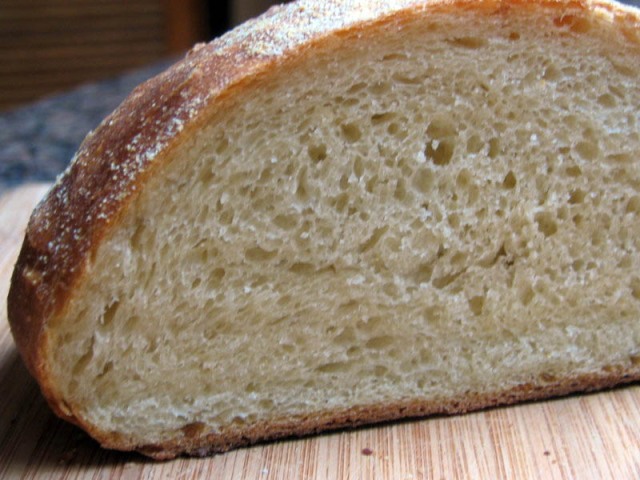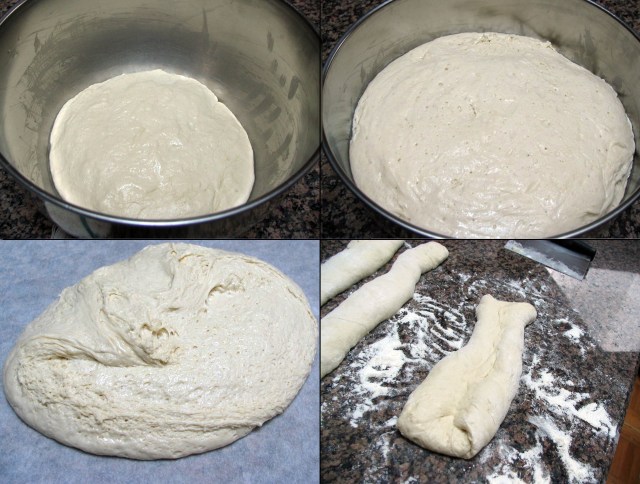Fifteen breads down, twenty-eight to go…
Once more I should say that all recipes from the challenge can be found here, a must-have book for any serious (or beginner) bread baker.
Reinhart’s Italian Bread is quite similar to the previous one (French Bread), except that it takes a “biga” instead of a “poolish”. No need to run away all scared, those are terms to describe the pre-mixture of flour, water, and yeast, that generally ferments for 24 hours before being used in the final dough. Usually a “biga” is firmer (contains less water).
For this bread, I changed the method of kneading. Instead of adding the dough to the Kitchen Aid and watching the machine do its job, I kneaded it myself, but used my favorite method: folding. I put the advice from bakers over at “The Fresh Loaf” to work, folding the dough twice, at 40 and 80 minutes, then forming a “boule” at 120 minutes. One more hour rising, and into the oven it went. These pictures show the second folding (made in two directions), and the “boule” right after shaping. Notice how bubbly it was, even before the final rise.
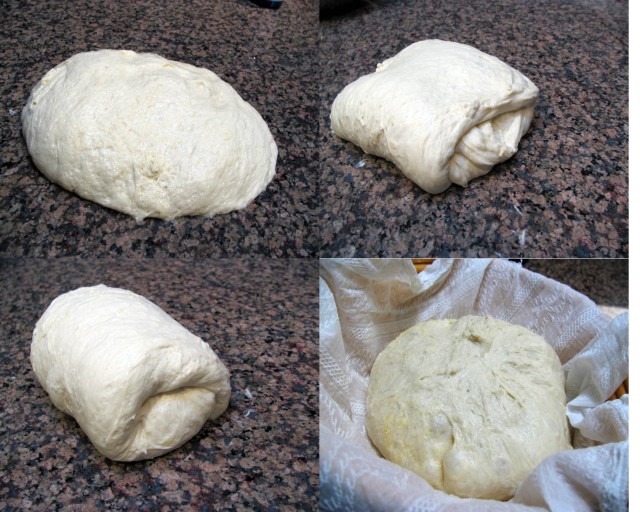
After 1 hour at room temperature, the dough rose about 1.5X of its original size, as expected. It had a spongy texture, airy and light. It lost some of it when I dumped it into my clay pot, but not much. It had good enough oven spring to recover.
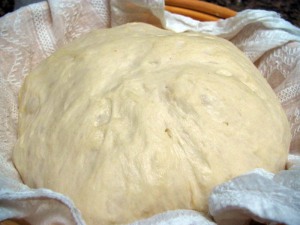
This bread is spectacular, the crumb has excellent texture, the crust is not too hard, not too soft, just right. As my husband put it, “it is not very easy to stop eating it”. Indeed. It was a wise decision to make half the recipe, because there is only so much running one can do. 😉
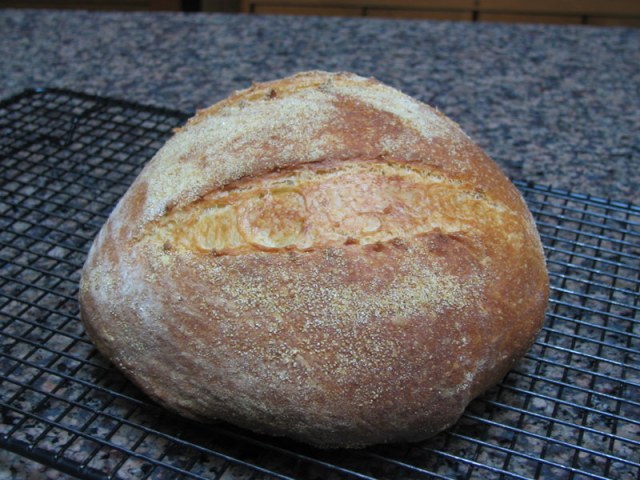
A final shot of the crumb…


